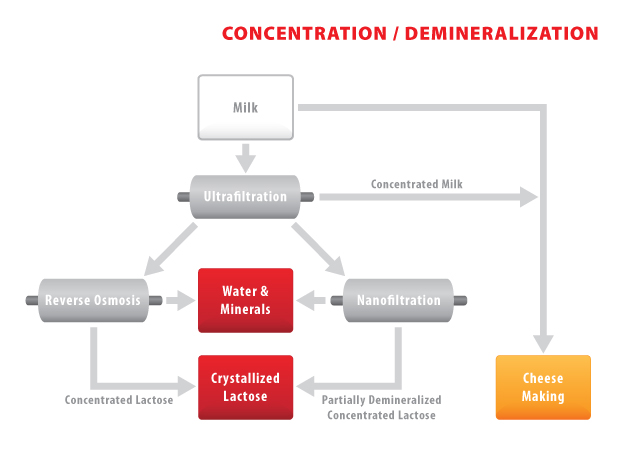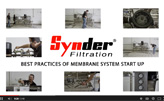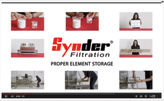Lactose Concentration
With traditional nanofiltration membranes having typically 98% MgSO4 rejection, Synder’s NFX NF membrane pushes the boundaries with an astounding >99% MgSO4 rejection. This results in a very high retention of lactose with comparable flux rates making it ideal for lactose protein concentration.
Benefits of membrane process:
- Reduce shipping and transportation costs
- Demineralization of feed
- High-quality lactose products
Nanofiltration is widely used throughout the dairy industry for lactose concentration and demineralization. By allowing monovalent ions to pass through while partially rejecting multivalent ions, lactose-free milk or whey volume can be further reduced in order to attain savings in transportation costs. The crystallization process can also benefit from the use of nanofiltration beforehand, by reducing the amount of minerals present to product higher-quality lactose from the whey and permeate.

Recommended membrane:
NFX, NFWApplications
CASE STUDY
questions? Fill out this form. We’ll contact you within 24 hours!
Resources
MEMBRANE RESOURCES
- Definition of a Membrane
- Membrane Materials: Organic vs. Inorganic
- Pressure-Driven Membrane Filtration Processes
- Concentration Polarization in Pressure-Driven Processes
- Degrees of Membrane Separation
- Flux Behavior in Membrane Processes
Module Configurations & Processes
-> View all membrane resourcesTUTORIALS









